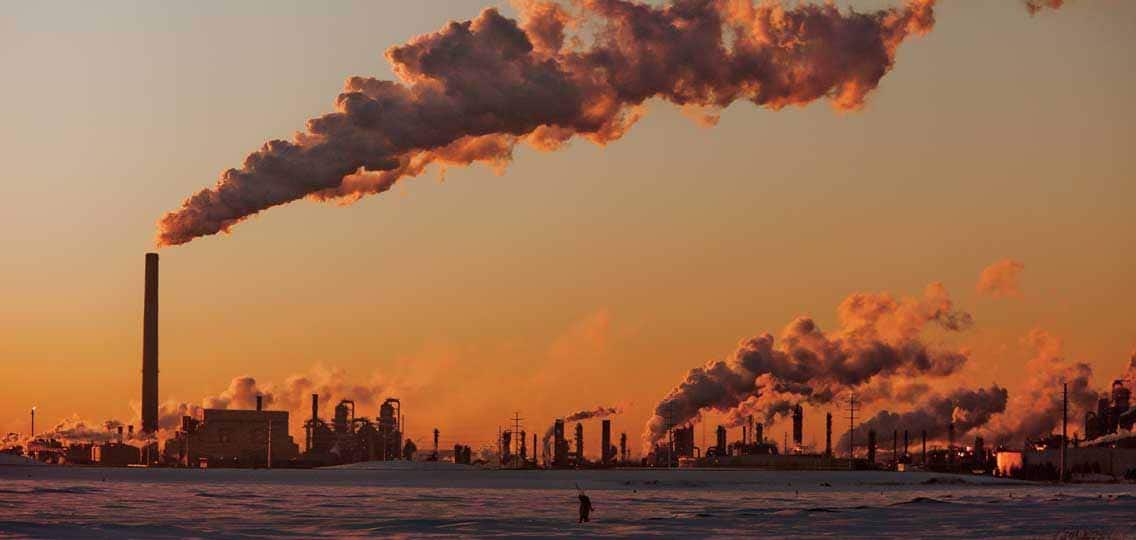Failure to recognize this right is a critical barrier to racial, environmental justice
Canadians may be shocked to learn that we – who live among some of the world’s last-remaining boreal forest systems and along the shores of the Great Lakes, whose glossy tourism adverts promise adventure in pristine archipelagos and towering mountain ranges – do not have a legal right to a healthy environment.
One person who was not shocked is Baskut Tuncak, the former United Nations Special Rapporteur on hazardous substances and wastes, who served in the role from 2014-2020.
Last year, Tuncak toured Canada. In his final report, released in September, he concluded that “people and peoples in Canada are chronically exposed to a multitude of toxic substances, which can and should be prevented.”
Legal recognition of the right to a healthy environment would guarantee that everyone in Canada has the right to access to a safe, clean and sustainable environment. It is integral to the full enjoyment of a wide range of human rights, including the right to life, health, food, water and sanitation.
It’s high time Canada’s federal government explicitly recognized and enshrined this right in Canadian law.
The COVID-19 pandemic highlights why a right to a healthy environment is so essential. The people most impacted by environmental racism and discrimination are also being disproportionately impacted by coronavirus. A growing body of evidence links exposure to environmental pollution to higher instances of illness and death from COVID-19.
The United Nations, as the world marks Human Rights Day on Dec. 10, has called for an end to structural discrimination and racism that has fuelled the COVID-19 crisis. 156 countries around the world have legal obligations to respect, protect and fulfil their citizens’ right to a healthy environment. Canada does not have this right enshrined in law.
Canada’s ongoing failure to do so exacerbates the troubling environmental inequities Tuncak documents in his report. In particular, Indigenous and racialized communities are more likely to be exposed to toxic pollution – and then encounter political and financial barriers to challenging well-connected polluters with deep pockets.
Canada’s laws and regulations, he writes, entrench a pattern of discrimination against Indigenous peoples and people in vulnerable situations: “The disproportionate exposure to pollution is worsened by pre-existing and long-standing socio-economic inequalities resulting from Canada’s colonial legacy.”
In short, in the absence of laws that establish that every person in Canada has the right to a healthy environment, it remains an elusive privilege given to some at the expense of others.
No law requires the federal government to consider people in vulnerable situations or what should be done to reduce their sustained exposure to toxic chemicals and pollution. Constant exposure to dangerous chemicals such as endocrine disruptors can have serious health impacts such as changes to the human hormonal system.
Communities know this firsthand. The ancestral lands of Aamjiwanaang First Nation, near Sarnia, Ont., have been invaded by petrochemical facilities that spew toxic pollution and poison into the air. Garbage dumps are disproportionately situated near Black communities in Nova Scotia while the expansion of the Alberta tar sands has coincided with an acceleration of cancer rates in the Indigenous communities of Fort Chipewyan.
An opportunity to stop this pattern of harm of polluted land, air and water are within reach.
For years now, the federal government has promised to reform the Canadian Environmental Protection Act (CEPA), Canada’s cornerstone environmental law. Inclusion of language establishing every Canadian’s right to a healthy environment is at the top of the list of reforms called for by a parliamentary committee, scientific experts, grassroots activists, environmental charities like Ecojustice, and most recently Tuncak.
This language, backed by the power of the law, would better protect the health and environment of all Canadians. Importantly, it would begin to redress some of the injustices that have been inflicted on Indigenous and racialized communities by successive Canadian governments.
CEPA has not been updated in 20 years and it has never included the right to a healthy environment. In 2017, a parliamentary committee recommended it be updated to include this right. Following their re-election last fall, the Liberals recommitted to updating CEPA.
To address these inequities and build a safer, healthier future for all of us, the federal government must establish every Canadian’s right to a healthy environment in a modernized CEPA.
A reformed CEPA that includes the legal right to a healthy environment would involve governments avoiding actions or making decisions that violate that right; preventing third paries from violating that right through their actions; and working towards ensuring that all Canadians have access to a clean, safe and healthy environment.
Canada should not be a country where, as Tuncak describes, “marginalized groups, and Indigenous peoples in particular, find themselves on the wrong side of a toxic divide, subject to conditions that would not be acceptable elsewhere.”
It is now time for Canada to join the majority of countries around the world and recognize the right to a healthy environment. But for now, the ball is – as it always has been – in the federal government’s court.






